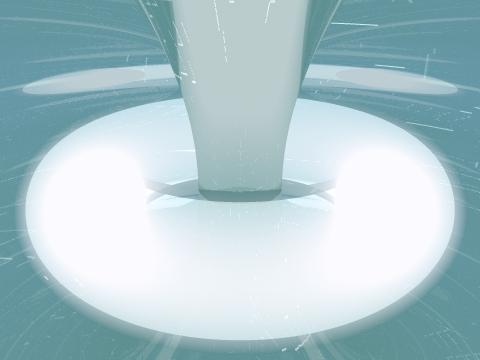Fusion Power
Not only will atomic power be released, but someday we will harness
the rise and fall of the tides and imprison the rays of the sun.
- Thomas Alva Edison
Fusion is the most used source of power, especially for spaceships and in fixed installations. A complete fusion reactor can be shrunk to a volume of around a thousand cubic meters, making it usable for larger spacecraft and in buildings but not in smaller or very mobile systems; for that fuel cells, solar cells or other energy sources are used. Most smaller fusion systems are fairly compact and easily maintained.
Safety is quite good, the core parts are radioactive but solidly shielded. It takes plenty of violence to break them apart. Coolant failures can be destructive, but at worst destroys the core and usually only leads to the reactor shutting down. It is very hard to get a reactor to do something spectacular.
The fuel is Helium 3, which is somewhat rare. The most common source is mining the surface of airless moons or asteroids exposed to the solar wind; this can be done using automatic mining vehicles that distil the valuable isotope from the surface gravel. A more expensive but potentially larger source is skimming it from the atmosphere of gas giants using ramscoops; currently this is only done by Unity on Zeus and by New America on Adams.
The Penglaiese have developed more advanced fusion, based on neo-Taoist engineering practices. By exploiting their understanding of controlled chaos they have not only developed much more compact and efficient reactors, but also made use of deuterium fuel possible. Deuterium can be extracted from seawater, making space industries unnecessary and energy even cheaper. Many of the larger fusion plants have integrated seawater extraction systems, especially the greenhouse plants which vaporise the water and spread it in the atmosphere.
